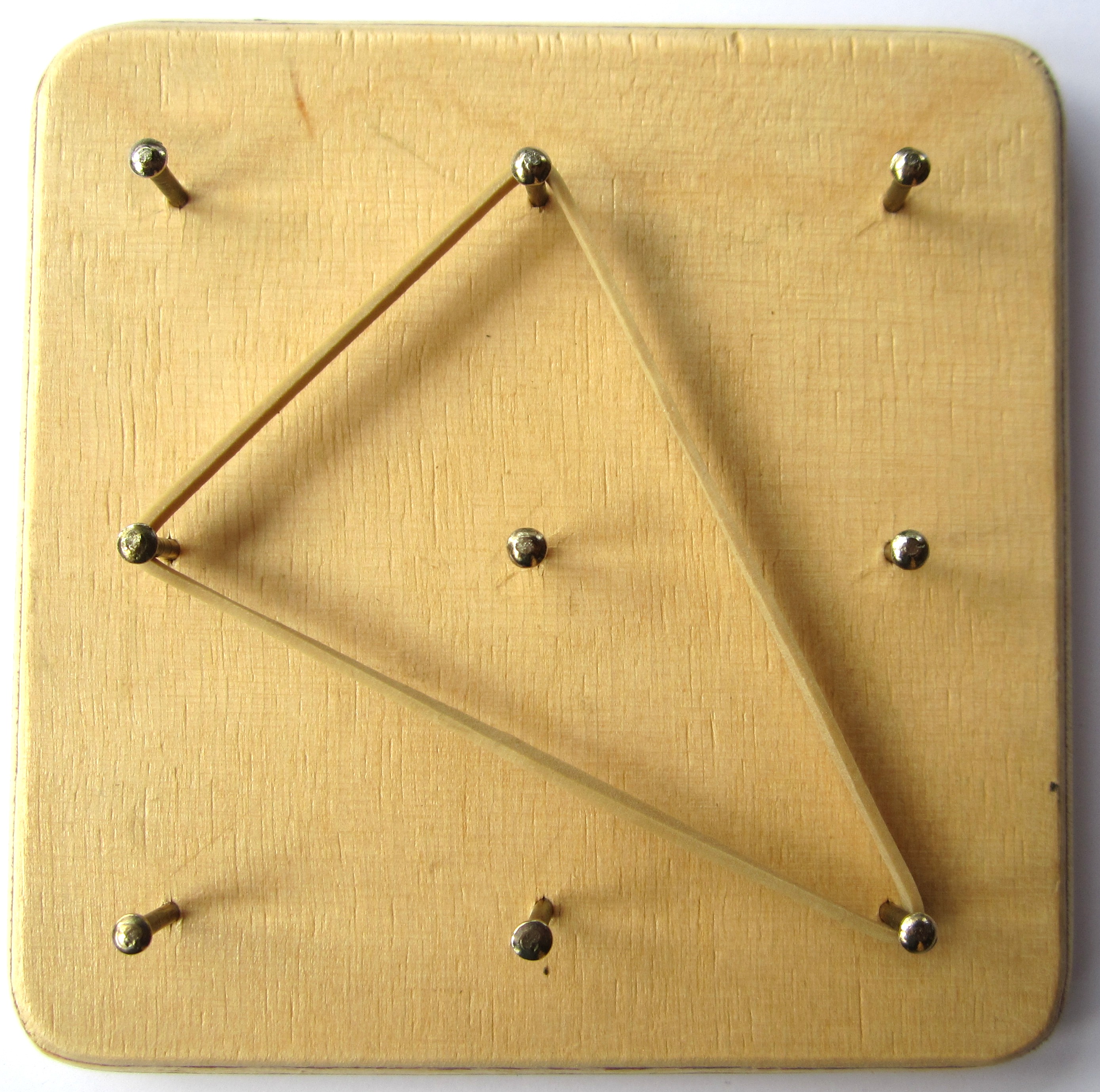Geoboard on:
[Wikipedia]
[Google]
[Amazon]

 A geoboard is a mathematical manipulative used to explore basic concepts in
A geoboard is a mathematical manipulative used to explore basic concepts in
plane geometry
Euclidean geometry is a mathematical system attributed to ancient Greek mathematician Euclid, which he described in his textbook on geometry: the '' Elements''. Euclid's approach consists in assuming a small set of intuitively appealing axioms ...
such as perimeter
A perimeter is a closed path that encompasses, surrounds, or outlines either a two dimensional shape or a one-dimensional length. The perimeter of a circle or an ellipse is called its circumference.
Calculating the perimeter has several pr ...
, area
Area is the quantity that expresses the extent of a region on the plane or on a curved surface. The area of a plane region or ''plane area'' refers to the area of a shape or planar lamina, while '' surface area'' refers to the area of an ope ...
and the characteristics of triangle
A triangle is a polygon with three edges and three vertices. It is one of the basic shapes in geometry. A triangle with vertices ''A'', ''B'', and ''C'' is denoted \triangle ABC.
In Euclidean geometry, any three points, when non- colline ...
s and other polygon
In geometry, a polygon () is a plane figure that is described by a finite number of straight line segments connected to form a closed ''polygonal chain'' (or ''polygonal circuit''). The bounded plane region, the bounding circuit, or the two to ...
s. It consists of a physical board with a certain number of nails half driven in, around which are wrapped geo bands that are made of rubber. Normal rubber bands can also be used.
Geoboards were invented and popularized in the 1950s by Egyptian mathematician Caleb Gattegno
Caleb Gattegno (1911–1988) was an Egyptian educator, psychologist, and mathematician. He is considered one of the most influential and prolific mathematics educators of the twentieth century. He is best known for introducing new approaches to ...
(1911-1988).
Structure and use
Geoboard is a board. A variety of boards are used. Originally made out of plywood and brass nails or pegs, geoboards are now usually made out of plastic. They may have an upright square lattice of 9, 16 or 25 nails or more, or a circle of nails around a central nail. Students are asked to place rubber bands around the nails to explore geometric concepts or to solve mathematical puzzles. Geoboards may be used to learn about: